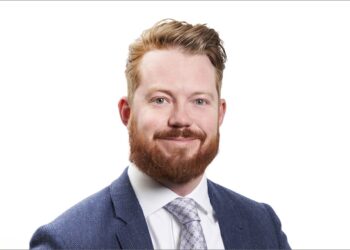Insurance inside superannuation is very popular, as it allows premiums to be funded from pre-tax dollars as well as the super balance. Super ownership does, however, add more complexity than ordinary ownership, which has become particularly apparent since 1 July 2014.
Since that date, super fund trustees have been limited in what insurance products (and what features of those products) can be offered from super.
“Own occupation” total permanent disability (TPD) policies can no longer be offered from super, as well as any other benefits attached to an insurance policy (i.e. certain benefits on income protection policies) that are not releasable to the insured person due to super law restrictions.
In addition trauma insurance can no longer be offered within super, although in practice there were few (if any) retail super funds that offered it before 1 July last year.
These changes, in combination with the existing complexity of owning insurance inside super, have driven innovation that ensures an insured person is able to obtain comprehensive insurance cover, while still funding the majority of premiums from super.
Flexible linking
Flexible linking allows lump sum insurance cover inside super to be linked with lump sum cover outside of super. A typical arrangement can often see a term life policy owned inside super linked with a trauma/living policy owned outside super.
Another arrangement is super-linking, where a term life policy is linked with an “any occupation” TPD policy inside super, and another linked “own occupation” TPD policy outside super.
With a flexible linking arrangement, as much of the cover as possible is owned inside super, therefore allowing as much of the premium as possible to be paid from super.
The impact on the client’s disposable income is minimised while still obtaining comprehensive cover and the total premium is lower due to the policies being linked.
Estate equalisation
If the client has a lumpy asset that makes up a significant proportion of the estate (such as a business or residential property), it may need to be sold to enable equal distribution to beneficiaries.
To avoid this, an appropriate term life sum insured allows beneficiaries to receive estate distributions to equalise the lumpy asset received by one or more other beneficiaries.
This may also reduce the likelihood of challenges to the will if it means beneficiaries feel they have received an equitable amount.
Once the decision has been made – that insurance can be used to equalise the estate, – it is then a matter of determining how to structure the cover.
As discussed above, there are benefits to owning insurance inside super that are magnified through the ability to use flexible linking.
Taxation of insurance proceeds
If term life insurance is owned inside super, there will be tax payable if the death benefit is paid to a non-tax dependant.
The sum insured could be grossed-up to ensure the net amount is enough for its intended purpose; however, this is not a matter of simply increasing the original sum insured by the amount of tax payable on that amount.
This is because any increase to the sum insured will have the flow-on effect of increasing the tax liability as well (the calculation is circular), so calculators are very useful in determining the grossed-up sum insured.
The grossed-up sum insured and tax calculations assume the date of death is today.
However, the actual amount of tax payable will decrease over time and depends on the date of death. This results in a higher net of tax amount remaining over time than what is calculated.
The case study below uses a calculator to determine the grossed-up sum insured and assumes the date of death is today.
Case study
Bronwyn has two adult children – John and Lachlan.
John works closely with her and will inherit the business when Bronwyn passes away. Her estate is comprised of the business, valued at $500,000, and $200,000 of other assets that will pass to Lachlan.
It is assumed Lachlan will retain any assets he receives from the estate.
To equalise estate distributions, net proceeds of $300,000 are required to ensure that both John and Lachlan receive assets valued at $500,000 each.
Bronwyn’s financial adviser recommends that a term life policy is obtained and owned inside super, with a linked trauma policy owned outside super.
This flexible linking arrangement allows the total premium to be lower than stand-alone policies, but allows as much of the premium to be paid from super as possible.
To ensure net term life proceeds to Lachlan are $300,000, it is necessary to determine the required sum insured.
The higher sum insured is calculated based on:
• Bronwyn’s birth date of 1 Jan 1960
• Bronwyn’s eligible service date (ESD) of 1 Jan 1995 (total days of 10,958)
• the assumption that the date of death is 1 Jan 2015 (service days of 7,313).
The taxable (taxed) component is calculated as the grossed-up sum insured multiplied by the service days, divided by the total days.
Where service days are the number of days between the ESD and date of death, and total days are the number days between the ESD and retirement date (age 65 in this case), the calculation is $384,565 x 7,313 / 10,958 = $256,640.
Therefore, tax on the taxable (taxed) component is calculated as $256,640 x 17% = $43,629.
The taxable (untaxed) component is calculated as $384,565 – $256,640 = $127,925.
Tax on the taxable (untaxed) component is calculated as $127,925 x 32% = $40,936.
There is no tax-free component.
Therefore, once the total tax of $84,565 is deducted from the grossed-up sum insured of $384,565, net proceeds of $300,000 will be paid to Lachlan, equalising the estate.
Super has always been a popular home for insurance for traditional purposes.
However, given the many strategies now available, advisers should consider the best ways to allow insurance to be funded with as little impact on disposable income as possible, such as the equalisation of the estate through flexible linked policies.
Rachel Leong is senior technical product manager, life insurance, at BT Financial Group




